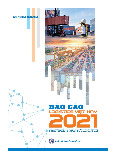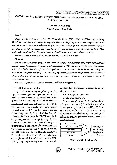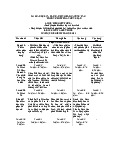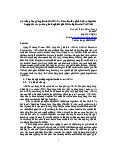


Preview text:
PROCUREMENT
1. What is procurement ? What is it relevance to logistics ? ( Thu mua là gì ?
Sự liên quan của nó với logistics là gì ? )
Procurement, which refers to the raw materials, component parts, and
supplies bought from outside organizations to support at a company’s
operations, is an important activity and closely related to logistics
because acquired goods and services must be entered into the supply
chain in the exact quantities and at the precise time they are needed .
Procurement is also important because its costs often range between 60
and 80 percents of an organization’s revenues.
2. . Discuss the potential procurement objectives.
The text provides five potential procurement objectives that could be discussed: -
Supporting organizational goals and objectives -
Managing the purchasing process effectively and efficiently - Managing the supply base -
Developing strong relationships with other functional groups -
Supporting operational requirements
3. Distinguish between a single sourcing approach and a multiple sourcing approach.
A single sourcing approach consolidates purchase volume with a single supplier
in the hopes of enjoying lower costs per unit and increased cooperation and
communication in the supply relationship. Multiple sourcing proponents argue
that using more than one supplier can lead to increased amounts of competition,
greater supply risk mitigation, and improved market intelligence. INVENTORY MANAGEMENT
1. How might different organizational functions have different inventory management objectives ?
Marketing, for example, tends to want to ensure that sufficient inventory is
available for customer demand to avoid potential stock out situations—which
translate into higher inventory levels. Alternatively, the finance group generally
seeks to minimize the cost associated with holding inventory, which translates into lower inventory levels.
2. Distinguish among cycle, safety, pipeline, and speculative stock.
Cycle (base) stock refers to inventory that is needed to satisfy normal demand
during the course of an order cycle. Safety (buffer) stock refers to inventory that is
held in addition to cycle stock to guard against uncertainty in demand and/or lead
time. Pipeline (in-transit) stock is inventory that is en route between various nodes
in a logistics system, while speculative stock is inventory that is held for several
reasons to include seasonal demand, projected price increases, and potential product shortages.
3. What are ordering costs, and what is the trade-off between inventory
carrying costs and ordering costs ? -
Ordering costs refer to those costs associated with ordering inventory, such
as order costs and set up costs. Order costs include, but are not limited to,
the costs of receiving an order (e.g., the wages of the person who takes
orders by telephone), conducting a credit check, verifying inventory
availability, entering orders into the system, preparing invoices, and receiving payment. -
The trade-off that exists between carrying and ordering costs is that they
respond in opposite ways to the number of orders or size of orders. That is,
an increase in the number of orders leads to higher order costs and lower carrying costs.
4. Define what is meant by inventory carrying costs, and list its primary components.
Inventory carrying costs refer to the costs associated with holding inventory.
Inventory carrying costs consist of a number of different components, and their
importance can vary from product to product. These components include
obsolescence costs, shrinkage costs, storage costs, taxes, and interest costs. WAREHOUSING MANAGEMENT
1. What function does the warehousing facilitate? -
Storage of goods : Goods are stored from time of production or purchase till their consumption or use. -
Protection of goods: A warehouse provides protection of goods from damage due to temperature, dust,etc. -
Financing: Goods stored in warehouse can act as a source of finance to get
loans from banks or financial institutions. -
Processing, grading and branding: Warehouse provides the facilities of
processing, packing and grading of goods. -
Distribution: Warehouse provides the transport to delivery cargo from DC to customs (B2B/B2C
2. Why warehouse is needed ? -
To achieve transportation economies -
To achieve production economies -
To take advantage of quantity purchase discounts and forward buys - To maintain source of supply -
To meet changing market conditions -
To support JIT programs of suppliers and customers - To reduce transport cost.




